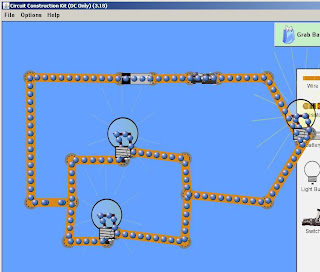Part A:
This is what I learned about the Conservation of Energy (COE). I learned that energy is a conserved quantity with the ability to produce change. Energy itself is non-changing, but it can simply be moved around and stored in different ways. In this unit, I learned about different types of energy storage. Some of these different kinds include elastic (Eel), gravitational potential (Eg), chemical potential (Echem), and kinetic (Ek). I also learned about internal energy, which involves friction. Internal energy is often found in the final stage of an energy bar diagram. When energy is transferred, the total amount of energy is conserved, which means the amount is the same and stays constant. Transferring energy from a type of energy storage to another is called "work". I also learned that there are three ways of energy transfer in or out of a system. The three ways are: working, heating, and electromagnetic radiation. During this unit I also learned how to construct a bar graph/energy flow diagram. In the diagrams, I use bar graphs to represent the initial and final energies. Some equations I used in this unit were: W=Fx (if F and d are in the same direction), P=W/t, KE=1/2(mv^2), PE=mgh, and PEe=1/2(kx^2).
I have also had some difficulties in this unit. I often get confused when I should use a net force equation in a problem. When there is a total amount of a certain energy, such as potential energy, I get confused about if I should add up the types of potential energy, such as PEg and PEe. Another thing I get confused about is when I need to find "h" sometimes. When a ramp is involved in a problem, I sometimes do not know when it is necessary to find "h" or "x". I believe that it is possible though to overcome my difficulties with these certain problems.
My problem-solving skills in this unit are a little under where they need to be I think. I feel like my weaknesses involve choosing which equation to use in problems. Some equations seem so similar to me that I sometimes forget they are different, such as the equation for PEe and KE. I feel though that this is just a memorization issue. If I take the time to study and learn these equations, I feel like my problem-solving skills in this unit will improve. My strengths include drawing diagrams for the given problem. Whether the problem involves a bridge, a ramp, or simply a flat surface, I feel like I can draw a diagram sufficiently. I definitely need to work some practice problems though.
Part B:
Energy and everyday life situations are connected in many ways. Every move we make involves energy in some way. For instance, I'll use a rollercoaster as an example. When the rollercoaster is at the top of a hill, it has little to no kinetic energy, but it has a lot of potential energy. Even if you are just mowing your lawn, energy is taking place. You are transferring energy into the lawnmower (at an angle). Energy is apparent everywhere.



